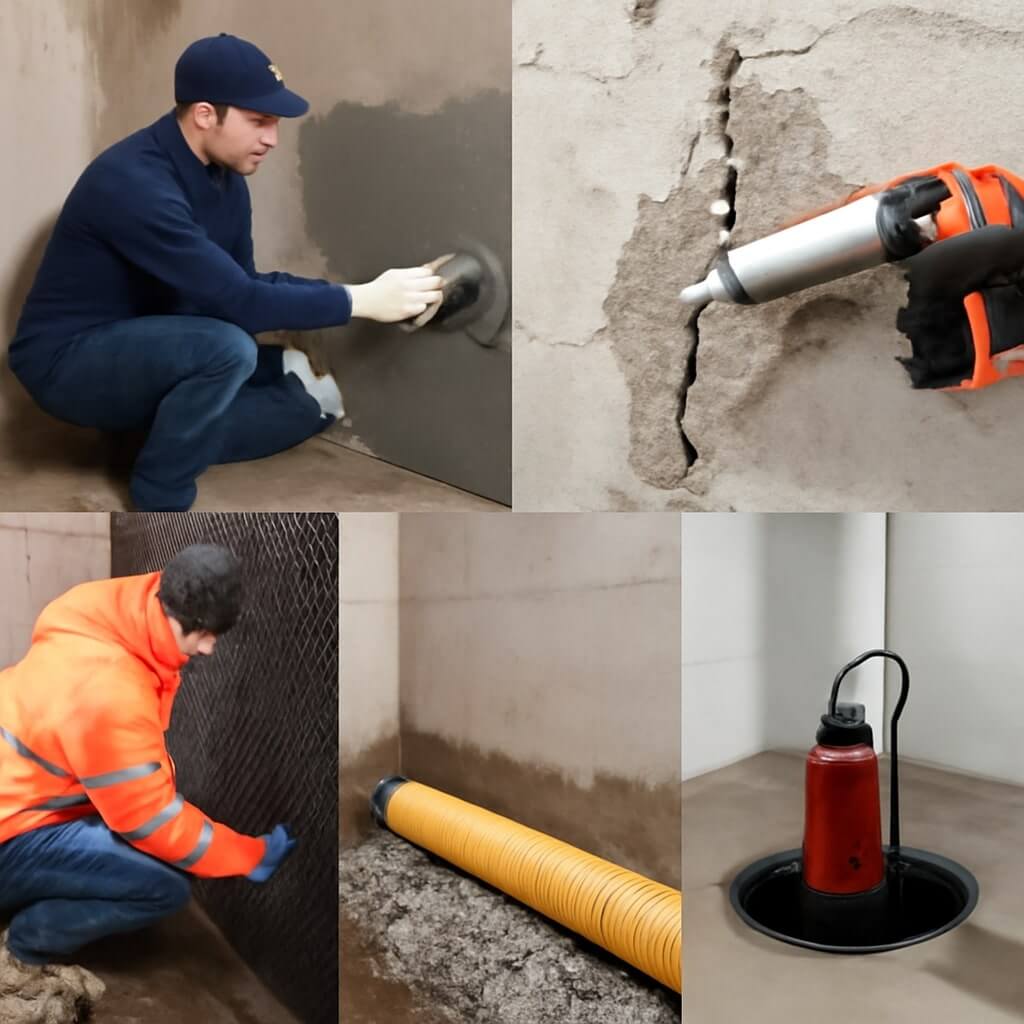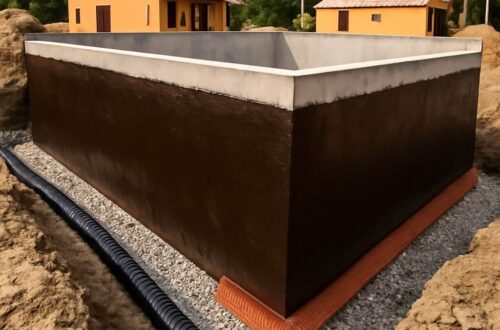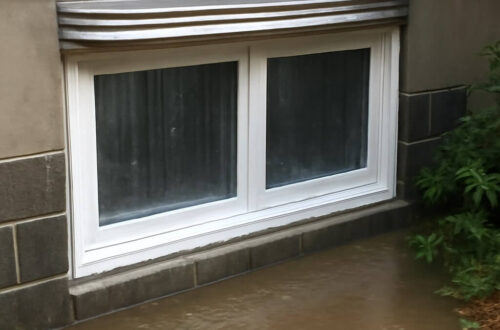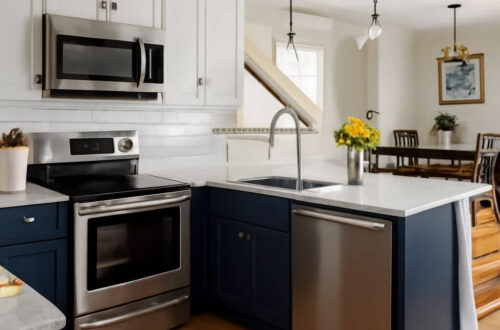When it comes to basement waterproofing, understanding the key techniques can make all the difference in protecting your home. You’ll find that a mix of interior and exterior methods is essential for keeping moisture at bay. From effective sealants to proper drainage systems, each step plays an important role. Want to know how a sump pump can enhance your protection strategy? Let’s explore these fundamental techniques in detail.
Key Takeaways
- Apply interior sealants and moisture barriers to walls and floors to prevent water intrusion and dampness.
- Ensure proper exterior drainage by grading soil away from the foundation and installing drainage systems.
- Regularly inspect and maintain gutters, downspouts, and drainage tiles to prevent clogs and flooding.
- Install a sump pump, choosing the right type, and maintain it with regular checks and battery tests.
- Control humidity with dehumidifiers and mold-resistant sealants to minimize the risk of mold growth in the basement.
Interior Waterproofing Solutions
When you’re dealing with moisture issues in your basement, interior waterproofing solutions can be your first line of defense.
Start by applying interior sealants to walls and floors, which create a barrier against water intrusion. These sealants penetrate surfaces, filling cracks and preventing moisture from seeping through.
Applying interior sealants to walls and floors creates a protective barrier, preventing moisture from seeping through cracks.
Additionally, consider installing moisture barriers, such as polyethylene sheets, to further shield your basement. They should cover walls and floors, effectively blocking humidity.
Together, these methods can greatly reduce dampness and protect your belongings.
Regularly inspect and maintain these solutions to guarantee long-lasting effectiveness in your basement waterproofing efforts.
Exterior Waterproofing Techniques
Exterior waterproofing techniques are vital for preventing water infiltration from the outside of your home. Start with foundation sealing to create a barrier against moisture. Next, make sure proper soil grading, directing water away from your foundation. These steps are essential in maintaining a dry basement.
| Technique | Description | Benefits |
|---|---|---|
| Foundation Sealing | Apply waterproof membranes or sealants | Prevents water entry |
| Soil Grading | Adjust landscape to slope away | Reduces pooling near foundation |
| Drainage Systems | Install exterior drainage options | Enhances moisture control |
Proper Drainage Systems
Proper drainage systems are essential for effectively managing water around your home’s foundation.
You’ll want to guarantee proper grading slopes to direct water away from the foundation. This involves sloping the ground away at a rate of at least 1 inch per foot for the first 6 feet.
Regular drainage maintenance is vital; inspect and clean gutters and downspouts to prevent clogs.
Consider installing drain tiles or French drains to manage excess water efficiently.
Maintaining clear pathways for water flow minimizes the risk of basement flooding and structural damage, ensuring your home stays safe and dry.
Sump Pump Installation
A sump pump is a critical component in basement waterproofing, particularly for homes prone to flooding or high groundwater levels. Choosing the right sump pump types—submersible or pedestal—is vital for effective drainage.
| Sump Pump Type | Advantages | Maintenance Needs |
|---|---|---|
| Submersible | Quiet and efficient | Regular cleaning of debris |
| Pedestal | Easier to service | Inspect for wear annually |
| Battery Backup | Works during outages | Test battery biannually |
| Combination | Dual protection | Check both systems regularly |
Proper sump pump maintenance guarantees longevity and reliable performance. Regularly inspect and clean your pump to prevent failures.
Mold Prevention and Control
Mold can thrive in damp environments, making effective prevention and control vital for maintaining a healthy basement. To combat mold growth, focus on moisture control through these critical strategies:
- Ventilation: Guarantee proper airflow by installing vents or exhaust fans, reducing humidity levels.
- Dehumidification: Use dehumidifiers to keep humidity below 60%, effectively minimizing moisture accumulation.
- Sealant Application: Apply mold-resistant sealants to walls and floors, creating a barrier against moisture penetration.
Implementing these techniques consistently will help you maintain a dry environment, greatly reducing the risk of mold growth and promoting a healthier basement space.
Conclusion
To sum up, implementing these five essential techniques can greatly enhance your basement’s waterproofing effectiveness. By focusing on both interior and exterior solutions, ensuring proper drainage, installing a sump pump, and prioritizing mold prevention, you’ll create a dry, safe environment. Regular maintenance and proactive measures will not only protect your home from water damage but also contribute to a healthier living space. Don’t wait—take action now to safeguard your basement against moisture-related issues.






